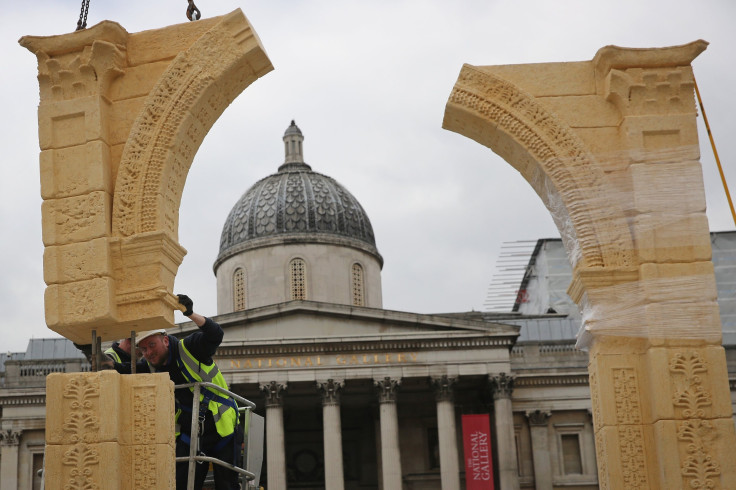After ISIS Destruction Of Palmyra, London Replica Arch Of Triumph Unveiled In UK

A historic arch razed by the Islamic State group in Palmyra, Syria, was standing tall again this week in London. Mayor Boris Johnson unveiled Tuesday a 3-D-printed, two-thirds-scale replica of the Arch of Triumph in Trafalgar Square.
The sculpture, which weighs about 11 tons, was created by the Institute of Digital Archaeology and intended to send a "powerful message" about the importance of preserving world heritage monuments, the Evening Standard reported. "Antiquities like this belong to all mankind and it is imperative that we all strive to safeguard our common heritage," Johnson said.
The Islamic State group, also known as ISIS or Daesh, blew up the original Arch of Triumph in October during its occupation of Palmyra, a Unesco World Heritage Site renowned for its ruins from the first and second centuries. Between May 2015, when ISIS took control, and March 2016, when Syrian and Russian forces forced the extremists out of the city, fighters demolished antiquities like the Temple of Bel. It's still unclear how long it will take Palmyra to recover from the ISIS takeover.
A moving moment as replica of Palmyra's Arch of Triumph unveiled in Trafalgar Sq to music of a Mesopotamian lyre pic.twitter.com/6N5kXFZYg9
— The Idle Woman (@theidlewoman) April 19, 2016
A replica of Palmyra Arch of Triumph destroyed by ISIS now stands on Trafalgar Square, London. pic.twitter.com/d0yIuLxWnK
— The Culture Trip (@CultureTrip) April 19, 2016
A team that included members from Harvard University, Oxford University and Dubai’s Museum of the Future worked from photographs of the real Arch of Triumph to create the 3-D-printed one.
“Monuments — as embodiments of history, religion, art and science — are significant and complex repositories of cultural narratives. No one should consider for one second giving terrorists the power to delete such objects from our collective cultural record," Roger Michel, the institute's director, told the Guardian. “When history is erased in this fashion, it must be promptly and, of course, thoughtfully restored.”
The $144,000 model arch debuted during World Heritage Week. After spending a few days in London, the structure was set to travel to New York and Dubai, according to BBC News.
© Copyright IBTimes 2024. All rights reserved.












